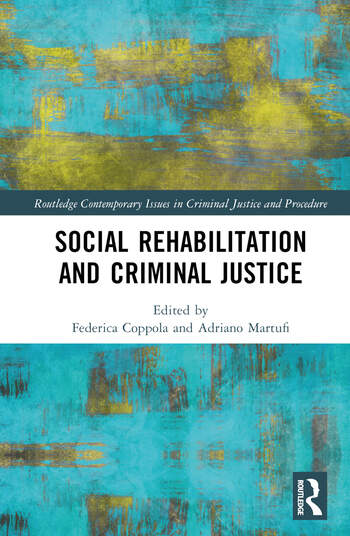
Coppola F., Social rehabilitation and criminal justice, Routledge, Abingdon, 2024.
This book provides a comprehensive analysis of the current directions in social rehabilitation scholarship and research by bringing together the voices of legal scholars, criminal justice professionals, social scientists, and people directly impacted by criminal justice, in a comparative, international and interdisciplinary fashion. The volume offers a narrative of social rehabilitation in penal contexts through five main domains: theoretical-philosophical; legal-comparative; human rights; social scientific; lived experience; and policy. Collectively, the contributions provide a systematized examination of the normative facets of social rehabilitation, and illustrate avenues for its implementation in criminal justice domains in the full respect of the rights of justice-involved individuals, casting a critical gaze on some the mainstream narratives dominating contemporary penal policy. The overarching legal approach is complemented by a selection of perspectives in social rehabilitation research emanating from social psychology, critical criminology, penology, and neuroscience. These perspectives inform and enrich the legal and jurisprudential debates on the qualification of social rehabilitation as a fundamental goal of justice across domestic and international legal systems. The book will be of value to academics, practitioners, advocates, and policy makers interested in current research dealing with the problem of punishment and the potential of social rehabilitation to more effectively deal with crime
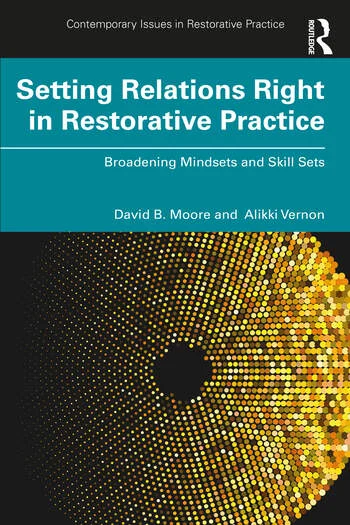
Moore D. B., Setting relations rights in restorative practice, Routledge, Abingdon, 2024.
Setting Relations Right in Restorative Practice is a practical guide to using restorative processes, both in justice systems, to provide a healing response to harm, and in broader community contexts, to help people co-exist peacefully. Restorative processes can help to establish, maintain, deepen, and repair relationships, and to neutralise the conflict associated with negative relationships. The result is less conflict within people, between people, and between groups, and increasing individual and community wellbeing. These complex goals can be distilled to the single principle of setting relations right. The authors distil lessons from their decades of work at the frontline of restorative innovation. They outline an accurate, accessible theory that informs a restorative mindset, and describe in detail the corresponding skill set. Succinct, engaging case studies include refinements to existing programs in justice systems. Other case studies include the innovations of restorative responses to institutional abuse and to family violence and sexual harm, initiatives to increase psychological safety in schools and workplaces, and programs that support restorative ways-of-working across whole cities or regions. By applying elements from successful programs, practitioners can realise the broader reforming potential of restorative
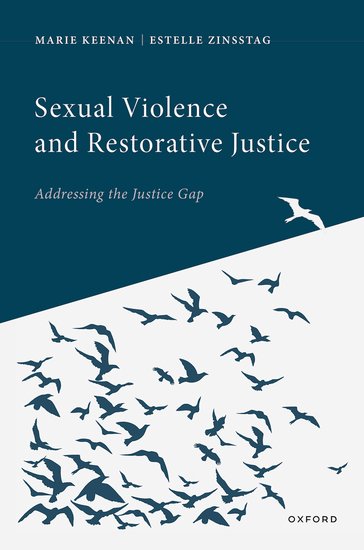
Keenan M., Zinsstag E., Sexual Violence and Restorative Justice: Addressing the Justice Gap, Oxford University Press, Oxford, 2022.
Concerned by the high attrition rates for sexual crime and the secondary victimization experienced by victims during their participation in the criminal justice system, this book analyses the extent to which restorative justice can address the justice gap that exists in current justice provision. Building on clinical experience and earlier research on sexual crime the authors engage with the complex dynamics and traumatic impact of sexual crime as a critical starting point for their research and examine whether restorative justice can contribute to a more enhanced justice response.

Johnson B. R., The restorative prison: essays on inmate peer ministry and prosocial corrections, Routledge, New York, 2022.
Drawing on work from inside some of America’s largest and toughest prisons, this book documents an alternative model of “restorative corrections” utilizing the lived experience of successful inmates, fast disrupting traditional models of correctional programming. While research documents a strong desire among those serving time in prison to redeem themselves, inmates often confront a profound lack of opportunity for achieving redemption. In a system that has become obsessively and dysfunctionally punitive, often fewer than 10% of prisoners receive any programming. Incarcerated citizens emerge from prisons in the United States to reoffend at profoundly high rates, with the majority of released prisoners ending up back in prison within five years. In this book, the authors describe a transformative agenda for incentivizing and rewarding good behavior inside prisons, rapidly proving to be a disruptive alternative to mainstream corrections and offering hope for a positive future.
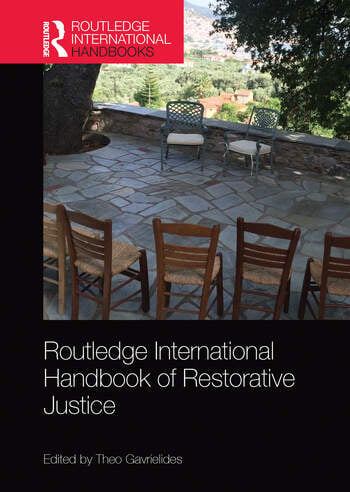
Gavrielides T., Routledge international handbook of restorative justice, Routledge, New York, 2021.
This up-to-date resource on restorative justice theory and practice is the literature’s most comprehensive and authoritative review of original research in new and contested areas. Bringing together contributors from across a range of jurisdictions, disciplines and legal traditions, this edited collection provides a concise, but critical review of existing theory and practice in restorative justice. Authors identify key developments, theoretical arguments and new empirical evidence, evaluating their merits and demerits, before turning the reader’s attention to further concerns informing and improving the future of restorative justice. Divided into four parts, the Handbook includes papers written by leading scholars on new theory, empirical evidence of implementation, critiques and the future of restorative justice. This companion is essential reading for scholars of restorative justice, criminology, social theory, psychology, law, human rights and criminal justice, as well as researchers, policymakers, practitioners and campaigners from around the world.
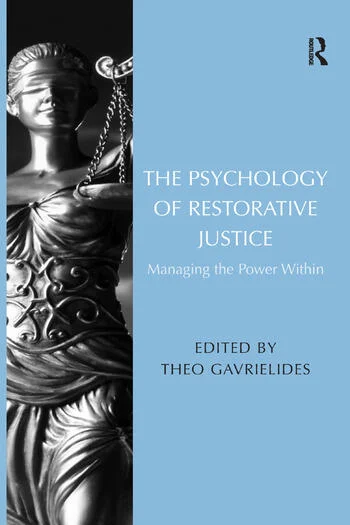
Gavrielides T., The Psychology of restorative justice: managing the power within, Ashgate, Farnham, 2015.
This ground-breaking collection dares to take the next step in the advancement of an autonomous, inter-disciplinary restorative justice field of study. It brings together criminology, social psychology, legal theory, neuroscience, affect-script psychology, sociology, forensic mental health, political sciences, psychology and positive psychology to articulate for the first time a psychological concept of restorative justice. To this end, the book looked into the power structures of the restorative justice movement, the very psychology, motivations and emotions of the practitioners who implement it as well as the drivers of its theoreticians and researchers. Furthermore, it looked at the strengths and weakness of our own societies and the communities that are called to participate as parties in restorative justice. Their own biases, hunger for power and control, fears and hopes are also investigated. Also relevant was the psychology and dynamics between those it aims to reach as well as those who are funding it including policy makers and politicians. All these questions led to creating an understanding of the psychology of restorative justice. The book is essential reading for academics, researchers, policymakers, practitioners and campaigners.The volume concludes with a call for a move towards an independent restorative justice discipline that does not ignore its own psychology and the learning that we can take from it through the tools supplied by sciences. This is the first edited collection establishing a psychological concept of restorative justice. Book audience: Senior-level capstone courses and upper-level seminars that review and expand on key areas of study in restorative justice, criminology, social sciences, social theory, psychology and positive psychology, law, neuroscience, human rights, criminal justice, and political science departments. The book is also intended for researchers, policymakers, practitioners and campaigners.
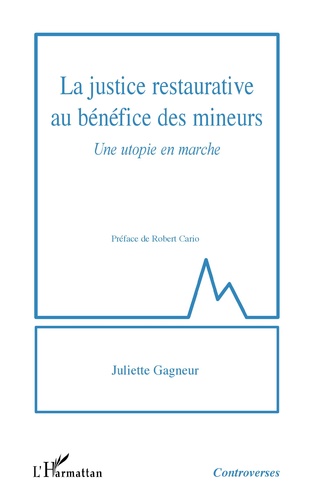
Gagneur J., Cario R., La justice restaurative au bénéfice des mineurs: une utopie en marche, L’harmattan, Paris, 2022.
Dans ce livre, l’auteur met en lumière sa découverte d’un nouveau modèle de justice dénommé la « justice restaurative» qui porte ses fruits dans le monde entier puisqu’il réinvente une méthode ancestrale de régulation des conflits. Elle offre à toutes les personnes concernées par une infraction un espace de dialogue nouveau, inédit, volontaire et sécurisé. Ce nouveau paradigme met ainsi l’accent sur la responsabilisation, le retissage du lien social et la restauration de tous. Cet ouvrage définit les fondements des rencontres restauratives et démontre pourquoi et comment il est possible de les mettre en œuvre de façon viable au sein des services de la Protection judiciaire de la jeunesse. La Conférence restaurative y occupe une place centrale, particulièrement adaptée à la délinquance juvénile.
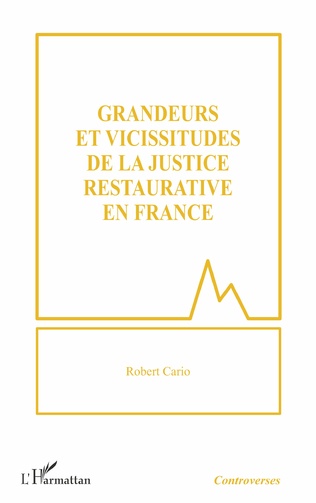
Carlo R., Grandeurs et vicissitudes de la justice restaurative en France, L’harmattan, Paris, 2021.
Voie la plus prometteuse pour sortir la pénalité moderne de la crise profonde qu’elle traverse, la justice restaurative repose sur un arsenal textuel de grande qualité. Les divers ateliers restauratifs qu’elle offre aux justiciables sont opérationnels tant dans le champ de la prévention, du processus pénal et pénitentiaire que dans les situations où l’action publique ne peut être introduite ou prospérer. Reposant sur un protocole rigoureux, soucieux d’éviter toute revictimisation des participants, ces ateliers respectent les principes et la méthodologie propres à l’approche relationnelle, pratiquée et conceptualisée par Serge Charbonneau et Catherine Rossi. À défaut de bien considérer que les ateliers restauratifs appartiennent aux seuls participants, des vicissitudes dans leur application se manifestent dans la compréhension des dispositions légales. De manière plus discutable encore, des pratiques pseudo-restauratives se développent sur le territoire national au mépris des valeurs de la justice restaurative. Or cette dernière a pour seul objectif le dialogue entre les participants volontaires qui, après une préparation minutieuse par des animateurs spécialement formés, choisissent d’échanger sur les répercussions du crime subi/commis qui n’ont pas été appréhendées lors du procès pénal.
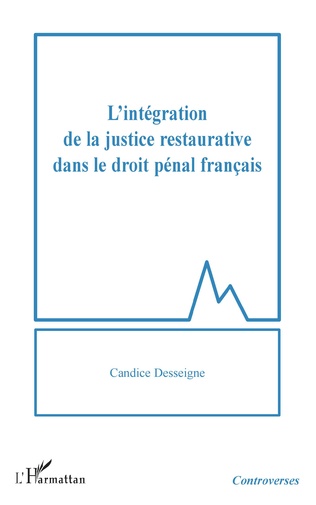
Desseigne C., L’integration de la justice restaurative dans le droit penal francais, L’harmattan, Paris, 2022.
La nécessité de mettre en place une justice qui « cicatrise au lieu de mutiler » se fait ressentir depuis fort longtemps. La justice restaurative semble pouvoir satisfaire ce besoin d’une réponse judiciaire plus humaine qui s’attache davantage à comprendre qu’à savoir. Cette nouvelle piste de justice offre aux auteurs et victimes la possibilité de se rencontrer pour sortir du différend pénal qui les oppose et cheminer, ensemble, vers un apaisement. Les recommandations des chercheurs, le soutien des praticiens, l’incitation des institutions internationales et régionales montrent alors la voie à suivre pour les prochaines étapes comportant la transposition nécessaire de textes européens.
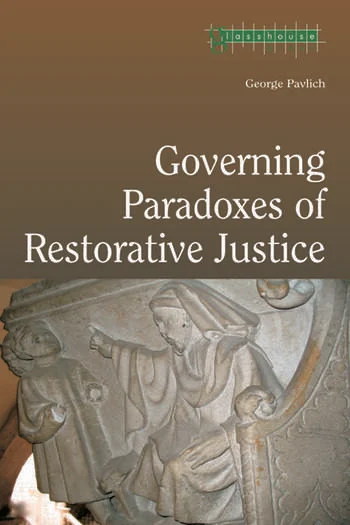
Pavlich G., Governing paradoxes of restorative justice, Routledge, Abingdon, 2005.
Restorative justice is the policy of eschewing traditional punishments in favour of group counselling involving both victims and perpetrators. Until now there has been no critical analysis of governmental rationales that legitimize restorative practices over traditional approaches but Governing Practices of Restorative Justice fills this gap and addresses the mentalities of governance most prominent in restorative justice. The author provides comprehensible commentary on the central images of this discursive arena in a style accessible to participants and observers alike of restorative justice.
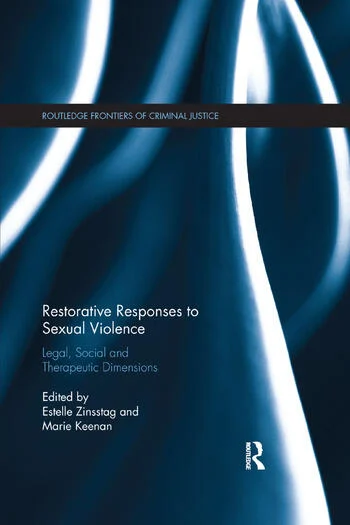
Keenan M., Zinsstag E., Restorative responses in sexual violence: legal, social and therapeutic dimensions, Routledge Taylor & Francis Group, London, 2019.
Sexual violence, in all its forms, is a crime for which anecdotal accounts and scholarly reports suggest victims in their great majority do not receive adequate ’justice’ or redress. The theory and practice of restorative justice is rapidly developing and offers some well-argued new avenues for dealings with crime in general. It has the potential to be extended to cases of sexual violence and a number of small scale programmes are already underway across the world. Restorative Responses to Sexual Violence examines this innovative justice paradigm in more depth in the particular context of sexual trauma and violence in order to establish the empirical realities of restorative justice approaches in cases of sexual violence, and considers how such approaches could be developed adequately in the future. This book is divided into two parts, each representing a key area of research and practice: theoretical and conceptual frameworks, and justice and therapeutic perspectives. This international collection brings together leading expert scholars and practitioners to offer both theoretical and practical perspectives on restorative justice and sexual violence. This book will be of interest to researchers in the field of law, criminology, psychology, social science, social work and psychotherapy, as well as practitioners in the fields of criminal justice, restorative justice and sex offender and victim trauma therapies.
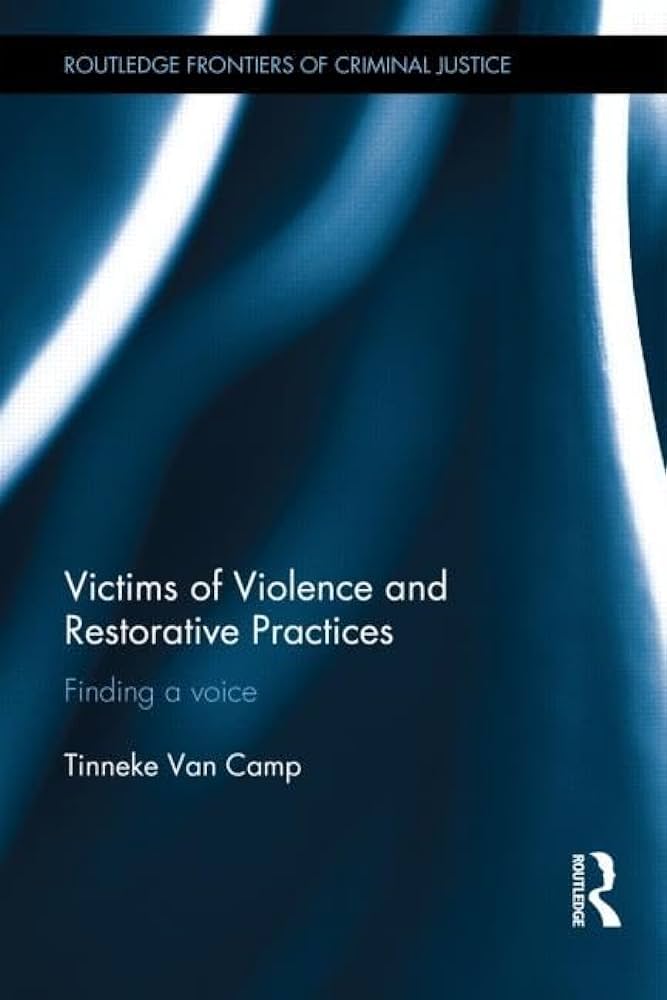
Van Camp T., Victims of violence and restorative practices: finding a voice, Routledge, Abingdon, 2014.
Restorative justice occupies an important place in criminological literature and criminal justice policies and is about facilitating communication between victims, offenders and communities in search of conciliation. Research shows that victims of crime are generally highly satisfied with their participation in a restorative intervention, such as victim-offender mediation, family group conferencing and victim-offender encounters. In order to maintain good restorative practice, the reasons why restorative justice is appreciated need to be clearly understood. In this book, Tinneke Van Camp identifies and explores the factors that contribute to victims’ appreciation of restorative practices in order to advance insight into why restorative justice works for victims.
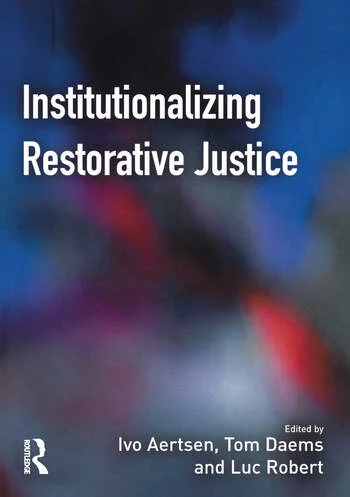
Aertsen I., Daems, T., Robert, L., Institutionalizing restorative justice, Routledge Taylor & Francis Group, Abingdon, 2006.
This new book aims to explore the key issues and debates surrounding the question of the incorporation and institutionalisation of restorative justice within existing penal and criminal justice systems, an increasingly pressing issue given the rapid spread of restorative justice worldwide at both national and international levels. In doing so it aims to build bridges between those concerned with the practical institutionalisation of restorative justice on the one hand, and those engaged in more theoretical aspects of penal development and analysis on the other. It offers conceptual tools and a theoretical framework to help make sense of these developments, reflecting expertise drawn from analysis of developments in Europe, North America and Australasia.
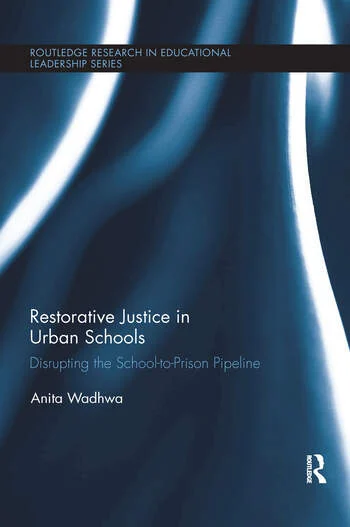
Wadhwa A., Restorative Justice in Urban Schools: Disrupting the School-to-Prison Pipeline, Routledge Taylor & Francis Group, London, 2016.
The school-to-prison pipeline is often the path for marginalized students, particularly black males, who are three times as likely to be suspended as White students. This volume provides an ethnographic portrait of how educators can implement restorative justice to build positive school cultures and address disciplinary problems in a more corrective and less punitive manner. Looking at the school-to-prison pipeline in a historical context, it analyzes current issues facing schools and communities and ways that restorative justice can improve behavior and academic achievement. By practicing a critical restorative justice, educators can reduce the domino effect between suspension and incarceration and foster a more inclusive school climate.
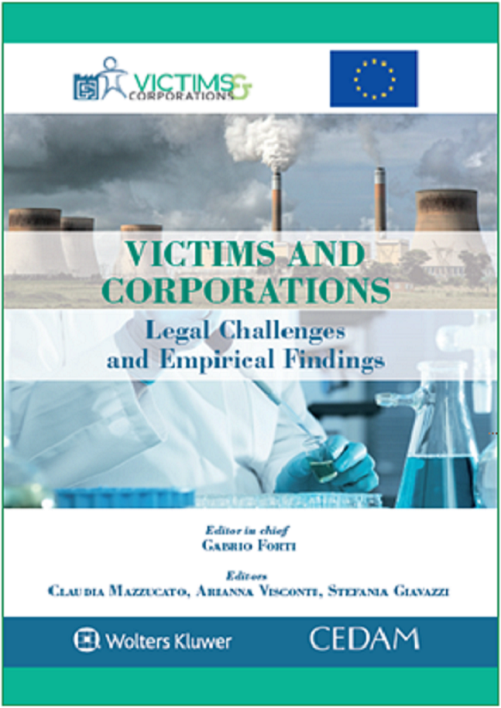
Forti G., Visconti A., Giavazzi S., Mazzucato C., Victims and corporations: legal challenges and empirical findings, Wolters Kluwer, Milano, 2018.
L’opera affronta le principali questioni connesse alla peculiare vulnerabilità delle vittime di corporate violence (squilibri informativi, patologie lungolatenti, incertezza scientifica, ecc.), delineando, anche alla luce delle indicazioni emerse da una articolata ricerca empirica, proposte e indicazioni in ordine alla partecipazione al procedimento penale e al sostegno, all’assistenza e alla protezione delle persone offese. L’opera include anche una serie di raccomandazioni, distillate dai significativi risultati del progetto e rivolte al legislatore e ai policy maker. Il volume è caratterizzato dal taglio interdisciplinare e da una costante lettura sistematica delle fonti normative europee e internazionali, anche alla luce della giurisprudenza della Corte di Giustizia dell’Unione Europea e della Corte Europea dei Diritti dell’Uomo. L’opera si presta a essere strumento utile per studiosi e professionisti.
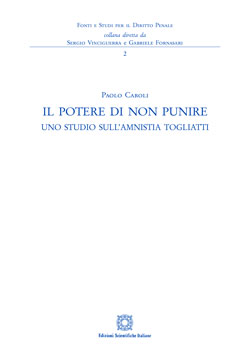
Caroli P., Il potere di non punire: uno studio sull’amnistia Togliatti, Edizioni scientifiche italiane, Napoli, 2020.
Il volume svolge una riflessione sulla categoria della punibilità a partire dalla transizione italiana dal fascismo alla democrazia ed in particolare dall’amnistia del 22 giugno 1946 (cd. amnistia Togliatti). Con questo provvedimento, a soli quattordici mesi dalla fine della seconda guerra mondiale, il governo di unità nazionale sceglie di esercitare il potere di clemenza in relazione ai crimini del fascismo e della Repubblica Sociale Italiana. Rivolgendo l’attenzione all’esercizio della potestà punitiva, l’Autore approfondisce la categoria della non punibilità ed in particolare lo statuto penalistico della clemenza collettiva. Si collega così il contesto postbellico al tempo presente, individuando l’esperienza della transizione italiana come paradigma per una riflessione più generale su profili politico-criminali – quale il rapporto fra potere politico e potere giudiziario –, sulle interdipendenze fra tempo, memoria e diritto penale e su istituti penalistici, primo fra tutti l’amnistia.
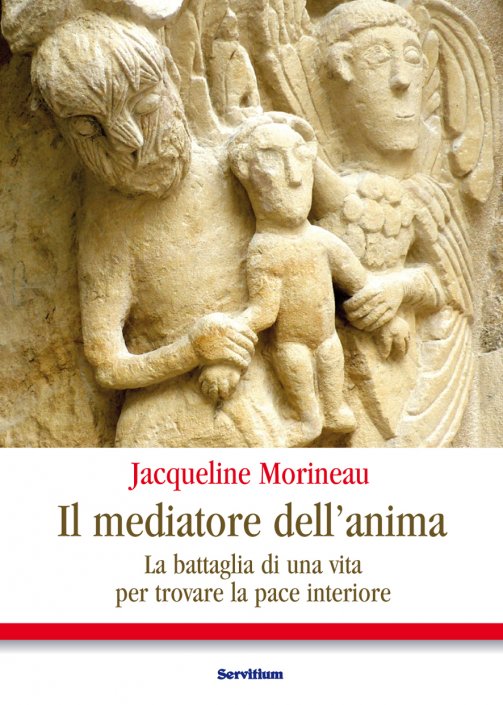
Morineau J., Il mediatore dell’anima: la battaglia di una vita per trovare la pace interiore, Servitium, Milano, 2010.
La presente opera, che costituisce il completamento del precedente libro L’esprit de la médiation, éditions Érès (Lo spirito della mediazione, Franco Angeli, 1998, 2004) J. Morineau intende perciò aprire il cammino anche verso il completamento dell’essere. Con il suo percorso esistenziale, costellato di pesanti prove, con il ricco bagaglio culturale acquisito, con il suo approccio professionale alla mediazione, l’autrice giunge a trasmettere il frutto prezioso di tutta una vita spesa nella ricerca e nell’approfondimento di risposte a pressanti interrogativi sorti in lei, ma che fanno parte del bagaglio umano d’ognuno e della crescita umana: come passare dalla morte alla vita? Come riconciliarsi con se stessi e con gli altri? In questo nuovo libro, più testimonianza di evoluzione interiore che trattazione di una nuova tematica, com’è appunto la “mediazione”, l’autrice vuole dare dimostrazione sperimentata di come sia fondamentale ritrovare il senso di una spiritualità che porti a unificare dentro di sé corpo e spirito, a una coscienza di sé che sviluppi le potenzialità costruttive di relazioni vitali e non più distruttive.
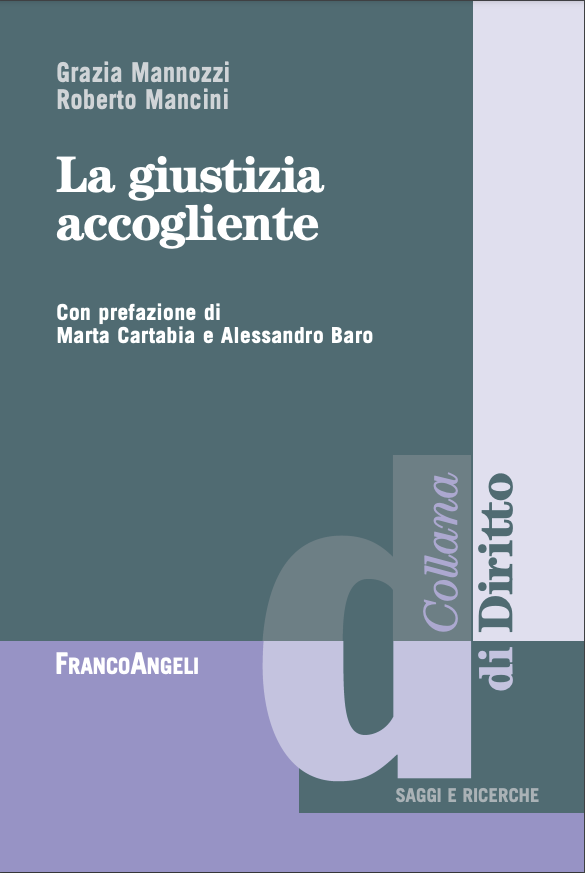
Mannozzi G., Cartabia M., Baro A., La giustizia accogliente, Angeli, Milano, 2022.
Da tempo si discute di giustizia riparativa, eppure questo paradigma di giustizia è difficile da definire e da circoscrivere. Il libro documenta i risultati del viaggio di una giurista e di un filosofo nel lessico della giustizia riparativa per comprenderne il senso e la forza trasformativa. Si tratta di un paradigma capace di promuovere una profonda ridefinizione anche della giustizia penale. Una dopo l’altra vengono proposte e chiarite le parole-chiave della giustizia riparativa: relazione, comunità, dialogo, capacità, responsabilità, riconciliazione, cura, verità, inclusione, trasformazione, giustizia, democrazia, sostenibilità. Ognuna di esse è considerata anzitutto nel suo profilo giuridico e poi nel suo valore culturale. In tal modo, le competenze della giurista e del filosofo entrano in dialogo per delineare il volto di una giustizia accogliente, che è tale nella misura in cui riesce a lavorare sulla relazione interpersonale e sociale, sul dialogo, sulla riparazione dell’offesa, sull’ascolto dei bisogni delle vittime, sull’inclusione, sulla verità, sulla gestazione di una società più umana. Ne emerge il profilo di una cultura e di una prassi giuridica finalmente rivolte a tutte e a tutti, nell’ottica di una cura capace di universalità. Un simile cammino sa mostrare come la giustizia in quanto tale consista non già nel punire ma, in primis, nel risvegliare le coscienze, nel promuovere il rispetto della inalienabile dignità delle persone, nel rinnovare le relazioni e nel risanare le situazioni compromesse dai conflitti, dalla violenza, dal misconoscimento dei diritti. Una giustizia accogliente è una giustizia vicina alle persone, affidabile e comprensibile, di cui è possibile fare esperienza concreta.
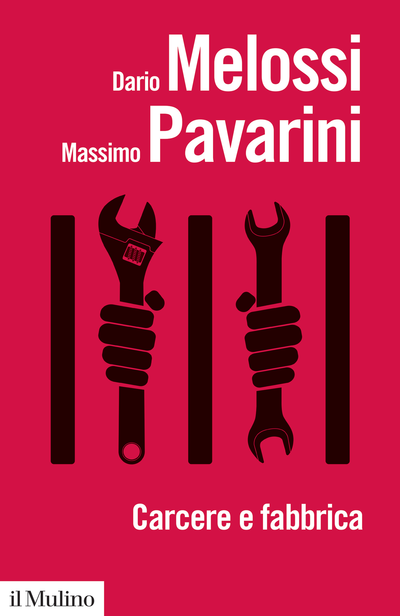
Melossi D., Pavarini M. Carcere e fabbrica: alle origini del sistema penitenziario, Il Mulino, Bologna, 2018.
Pubblicato dal Mulino nel 1977, tradotto in più lingue, «Carcere e fabbrica» è universalmente ritenuto – a fianco di «Pena e struttura sociale» di Rusche e Kirchheimer e di «Sorvegliare e punire» di Foucault – un grande classico sulle istituzioni carcerarie e le loro origini storiche. Indagando i rapporti tra carcere e lavoro in Europa e in Italia tra il ’500 e la prima metà dell’800, e le esperienze carcerarie degli Stati Uniti nella prima metà del XIX secolo, emerge come l’istituzione carceraria non faccia che proporre in maniera afflittiva modelli di organizzazione sociale ed economici già presenti nella società, che tendono a fronteggiare con strumenti repressivi le grandi masse di disoccupati e di sbandati. Il libro si correda ora di una nuova prefazione di Jonathan Simon e di due saggi inediti degli autori.
